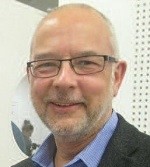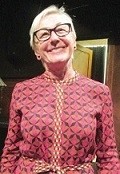Out of the Shadows
Some years ago, during Ellul, just before Rosh Hashanah, I was in Leeds, England, and I attended a talk by a friend, Dr David Fligg, about Jewish Czech composers and musicians who were interned in Terezín (Theresienstadt) during the Second World War.
David, a musicologist and lecturer in music, had found a research niche, and was looking into the composers and musicians who had been taken to Terezin. After the talk I said to David, "Do you realize you are doing a mitzvah? It is Ellul, just before the High Holydays, when we Jews remember the people who are no longer with us, and you have just spoken about these composers who were killed by the Nazis, and by this you are keeping their memory alive."
Over the years David's research became much more intense. He became an authority on the composer Gideon Klein and has followed the trail from his birth in Přerov to his death in a sub-camp of Auschwitz.
I recently visited Prague, also in Ellul, to attend a Jewish music festival, coordinated by David. The 'Performing the Jewish Archive' (PtJA) international project, based at the University of Leeds, and funded by the UK Arts and Humanities Research Council, has created 'Out of the Shadows', a festival of Jewish music and theater featuring the music and writings of Czech Jewish composers and writers, many of whom did not survive the Holocaust.
In Prague I hoped to experience the events in their home settings, many of which were dramatically authentic. Thanks to the hard work and imagination of festival coordinator, Zdenka Kachlova and video and sound recording by Simon Glass and his team, I was not disappointed.
The festival opened in the magnificent Jerusalem Synagogue. Moorish arches picked out in blue, a large Magen David, and stripe detail of pink, and natural stone walls, which stood out in a rather dull and ordinary street. Jerusalem Street, after which the synagogue is named, is in an area known as the New Town. The synagogue was dedicated in 1906, and has been recently restored to its original grandeur. The festival audience was welcomed by Dr. Lisa Peschel, a specialist in theatrical performances that took place in the Terezín Ghetto, and she addressed the audience in both Czech and English.
The opening performance, 'Heritage and Hope', included rediscovered synagogue music from pre-war Prague, which had been lost during the Holocaust. Songs based on religious texts were now being brought 'out of the shadows' to be played again in public. Poetry written by children imprisoned in Terezin was narrated and sung.
The excellent Clothworkers Consort of Leeds sang hauntingly from an upper balcony of the synagogue in stunning acoustic conditions, and a melodic and harmonious 'Jisgadal' (Kadish), by Baruch Gutmann, was very emotive. Pupils of the Louny Basic Arts School, the Czech actress and civil activist Tana Fischerová, and composer and pianist Daniel Dobias narrated and performed.
Later we were at the beautiful Spanish Synagogue listening to the music of Hans Gal, a Jewish Austrian composer who fled Nazi Europe and settled in the UK. Gal adored choral music and the Clothworkers Consort of Leeds sang to music he put to texts written by Shakespeare, Blake, Johnson, and Shelley.
The 'Spanish' synagogue takes its name from the Moorish style exterior and exquisite Moorish interior décor. It was built by 1868 on the site of the previous shul, formerly the oldest in the old town, when a larger Reform Synagogue was needed.
The following day we travelled to Plsen for three concerts, held at three different venues.
Project coordinator Dr David Fligg and at right Zdenka Kachlova, Project Coordinator in Prague. Plsen, famous for its beer, had a sizeable Jewish community dating back to the 14th century. They were expelled in 1504 but allowed to return in the 1850s. In 1942, some 2,605 Plsen Jews were deported to Terezin. According to the Museum leaflet of the Plsen Great Synagogue: "The synagogue was returned to the Jewish community after the war, however only 204 Plsen Jews survived the concentration camps."
Today, an ongoing project run by the Federation of Jewish Communities in the Czech Republic is restoring and revitalizing Jewish monuments, including synagogues.
The Jerusalem Synagogue, Prague, and (right) at the old synagogue in Pilsen, where these stones are memorials to the Jewish residents of the town who perished in the Holocaust. Each stone has the name of a victim written on it
We visited the Great Synagogue. The exterior stands out as Moorish in style, and pink, in contrast to the adjacent buildings. It officially opened in time for Rosh Hashanah in 1893. Damaged during the war, there are plans to restore its interior to its original state.
The first venue was the Plsen Conservatory, for the 'Fate and Fairytales' concert, which began with a world premiere of a melodrama, Topol (The Poplar), for narrator and piano, written by Gideon Klein in 1938, and discovered in the archive of Prague's Jewish Museum by David Fligg.
It was momentous to hear this piece almost 80 years after it had been written, performed by the pianist, Vera Mullerová, and narrated by Blanka Hejtmánková. Another short piece, 'Movement for Harp', also composed by Klein, and receiving its Czech premiere, was played by Vanda Šabaková, a student at the conservatory. A series of short piano pieces followed, composed by Josima Feldschuh, 12, who had been interned in the Warsaw Ghetto and was killed by the Nazis.
The Clothworkers Consort performed their program in the 150-year-old Old Synagogue.
Later, we were at an apartment once owned by the Jewish Kraus family, designed by architect Adolf Loos, and recently renovated and restored to its original 1920s state. Two cabarets were performed by The Flying Rabbi Klezmer Ensemble. One was written inside the Terezín Ghetto and the second in Helsinki, when Finland stood precariously between Germany and the Soviet Union.
Next day, a tour of Prague's Jewish Quarter began at the Pinkas Synagogue, now a memorial to 80,000 Czech Jews lost in the Holocaust. Then we walked through the old cemetery, stopping at various points of interest, hearing about the layering of burials, the rabbis and other personalities buried there.
We went inside Altneu Shul, the oldest medieval synagogue still in existence, functioning and unique.
Final stop was at the Maisel Synagogue named after its builder Mordechai Maisel, who was then the mayor. It has been part of the Jewish Museum since 1996. Built in the 1590s and intended to be his own private house of worship, it was rebuilt in 1691 after a fire almost destroyed it.
I will never forget the production, Gideon Klein – Portrait of a Composer. Put together from David Fligg's research, translated by Hana Trojanová, and with exceptional, creative direction by Kateřina Ivaková, it presented him and the people he was close to as living human beings with thoughts and feelings. It took us through the carefree gaiety of pre-war Prague to the uncertainty of the war and deportation to the camps – and to Gideon's eventual murder in Auschwitz.
The story was played out by student actors from the conservatory who convincingly demonstrated the moods of the characters during those times. It was interspersed with music by Mozart, Paul Hindemith, Janáček and Gideon himself, played by the Fama String Quartet, led by David Danel.
A lunchtime concert in the Maisel Synagogue Museum had the Fama String Quartet beautifully playing music composed by two Holocaust victims: Gideon Klein's final composition, 'Trio for Violin, Viola and Cello' and Ledeč's 'Gavotte' (he was murdered in 1944, aged 55) were played alongside a specially commissioned work – the compelling 'Mikva' by the young Prague-based composer Daniel Chudovský, as well as Josef Suk's deeply moving 'Meditation on the St Wenceslas Hymn,' which became a symbol of Czech nationhood under Nazi occupation.
On a walk devised and led by David Fligg, we visited the places known to Klein during the years he lived in Prague with his older sister, Lisa. We saw the homes, schools and places where Gideon had studied and performed, and heard about the people he knew.
We began at the historic Lucerna Cafe inside an old arcade of great character, off Wenceslas Square. Some places were of special interest, such as the building from which the family was taken to Terezín. David had been instrumental in getting 'stolpersteine' – memorial plaques – in memory of Gideon and his mother, Ilona, set into the pavement in front of the apartment building at Rasinovo 66, which stated their date of deportation.
We went also to the Lauder School in Prague and met the headmaster, Petr Karas. This building had been a Jewish orphanage before the war, and we were taken to see the room where Hans Krása's childrens' opera, Brundibar, was first performed in 1942.
Our last stop was outside the house where Mozart lived during his stay in Prague. Gideon greatly admired his work, and said that every time he passed the building, he would raise his hat in respect.
Another event – Mother Rachel And Her Children – was written by Jac Weinstein, a Jewish writer living in Finland who fled the Germans and survived the Holocaust in Sweden. Discovered and translated from the original Yiddish by Dr. Simo Muir, Weinstein's script was performed in Czech by narrators, Piccolo Coro choir, with solo artists – and described the persecution of Jews through centuries.
The story ended optimistically with the establishment of the State of Israel, and the singing of the Hatikvah.
The Festival's closing event took place in Terezín itself, in the theater in the former Magdeburg Barracks. The play we saw was written by inmates of the Ghetto, to gently bring awareness to children, of the fragility of life, through the story of a family of fireflies.
The script adaptation and song selection were by Lauren B. McConnell, and it was acted and sung by students from Central Michigan University. On arrival, each member of the audience was given a flower, and when the play finished, we were asked to place our flowers on the spot where the fireflies had died.
This, to me, was the most poignant moment. As the festival was closing we laid flowers in the Terezín Ghetto at the end of this memorable week of bringing lost words, music and people 'Out of the Shadows' and back to life.
Thanks to David Fligg and his team, Gideon Klein's last words to his family and friends – "Do not forget about me" – are not forgotten.
■Further details about the Performing the Jewish Archive Project, and videos of all the 'Out of the Shadows' performances, can be found at: http://ptja.leeds.ac.uk/
■David Fligg can be contacted directly at This email address is being protected from spambots. You need JavaScript enabled to view it.














Comments